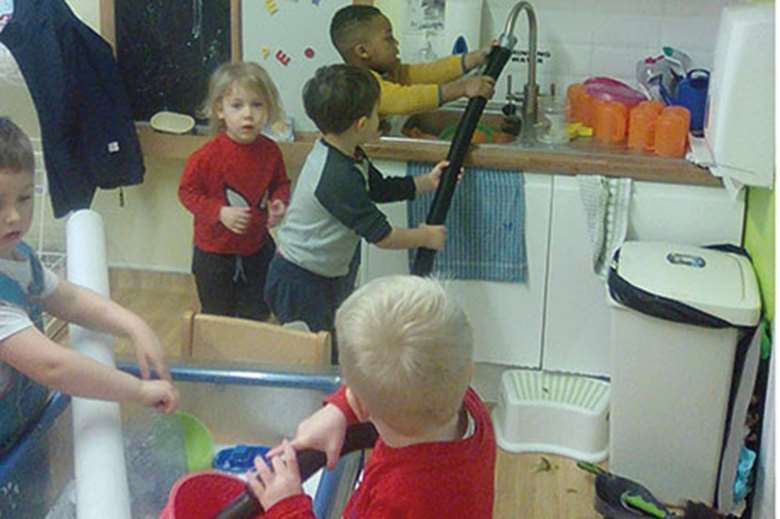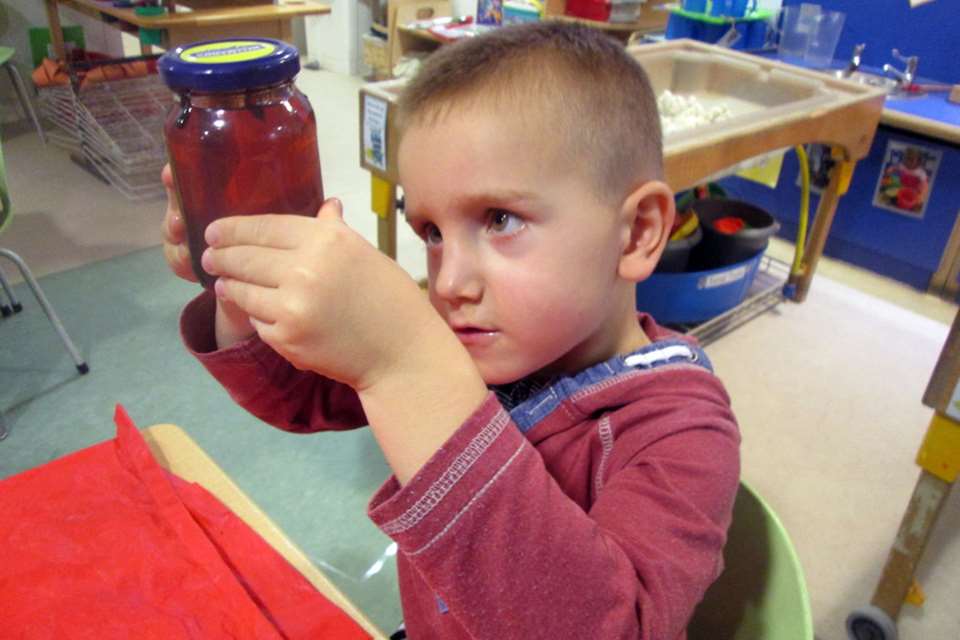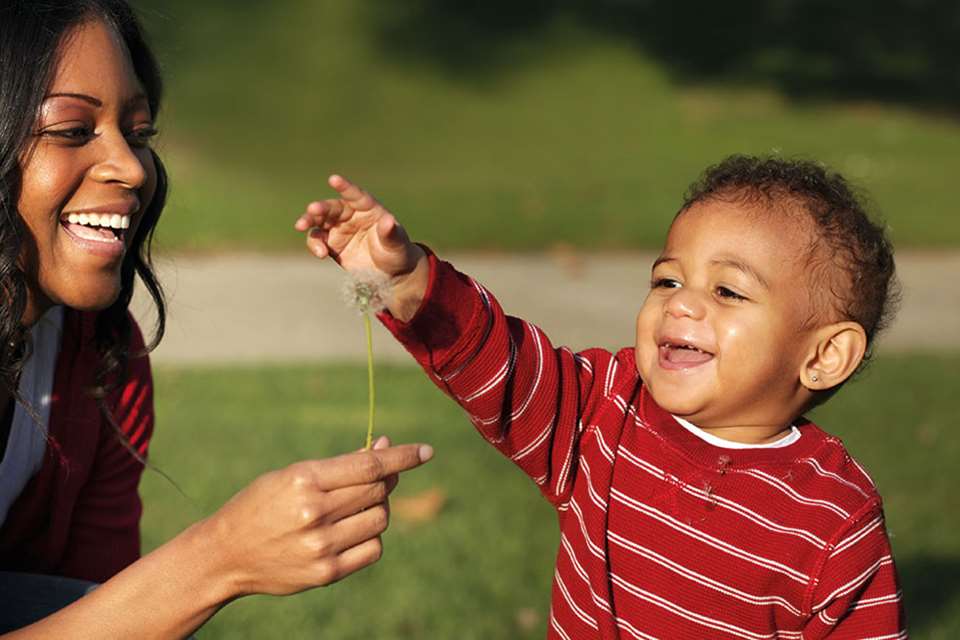EYFS Activities - We’ve explored… tubes
Annette Rawstrone
Monday, March 19, 2018
One setting investigated the purpose of pipes, which led to great educational play, finds Annette Rawstrone

A pre-school child’s question about the purpose of a piece of plastic hosing led to children exploring tubes and pipes in various forms for many days at Little Adventurers Nursery in Upminster, Essex.
‘I totally believe that everything is a learning opportunity for young children, so when the question was asked, we discussed pipes and tubes and looked at how water runs through them,’ says nursery manager Ginny Andreas. ‘The children decided to hunt around the nursery and fill the water tray with all the tubes they could find.’
This led to them locating various tubes, including recycled plastic tubing and an old hose from a vacuum cleaner. The children gathered them together and attached the tubes to the tap, hunting for a variety of containers, ranging from role-play cups to a bucket, and worked together to fill them up.
‘I wondered what additional learning we could get out of their investigations and encouraged the children to count how long it took to fill the big and small containers,’ says Ms Andreas. ‘Their vocabulary included words such as “full”, “empty”, “damp”, “waterproof” and “level”. The children also worked as a team to count, direct the tubes into the containers and tell the child at the tap when to turn the water on and off.’
When children dropped a wooden block and some paper in the water, this led to further discussions about the word ‘soggy’ and how some materials soak up water rather than repel it. It inspired the children to compare the properties of different materials, such as the plastic tubes and the wooden block, and discuss what is waterproof and what absorbs water.
Practitioners introduced the scientific concept of gravity – how it pulls things down and liquid always runs down to find the lowest point – to the children’s investigations when they realised that the water would not fill the containers if the hose was pointing upwards.
Some children extended this investigation about gravity when they stretched lengths of elastic across the role-play area to form a zip wire, which they used to slide their knight figures down. They found out that the steeper the slope, the faster they slid down.
Children returned to the tubes later to make sand chutes and experimented with gradients again. When a pebble got stuck in the chute, they used their developing maths language and problem-solving skills to work together to release the pebble.
‘We try to teach concepts in the moment and not solve problems for the children, but set challenges and let them learn through their creative explorations,’ explains Ms Andreas. ‘Through the pipe investigations there was a lot of learning in the moment, with children conducting experiments and testing their hypotheses to develop their scientific understanding.’
PIPE HUNT
The picture book Under the Ground by Anna Milbourne, which explores the hidden world of fossils, burrowing animals, pipes and trains, sparked the children’s interest further. They talked about the function of pipes under the nursery sinks and toilets – particularly hilarious to some of the children – and went on a pipe hunt around the nursery to find them all.
In order to provoke more explorations, the nursery bought additional materials, including several lengths of polyethylene pipe insulation and funnels to extend experiments in sand and water trays.
Unexpectedly, some children used the pipe insulation as measuring sticks. First friends and furniture were measured, then children attempted to touch the ceiling with the tubes. As this latter challenge proved much trickier, further support was offered by Ms Andreas to facilitate this and the children discussed ideas to try to reach their goal.
‘Critical thinking and creativity were definitely in evidence, as well as sustained shared thinking through the session,’ remembers Ms Andreas.
The pre-schoolers faced a further challenge one day as they tried to get a very long carpet tube up the stairs to their room. Children discussed how to make it work without pulling the pictures off the wall in the process and discovered that transporting the tube vertically would work, but horizontally would definitely not.
FUN AND LEARNING
 At Little Adventurers, children regularly use tubes to create imaginary pirate ships, dens and castles using upturned tables with long tubes and fabrics placed over the legs to make the structure.
At Little Adventurers, children regularly use tubes to create imaginary pirate ships, dens and castles using upturned tables with long tubes and fabrics placed over the legs to make the structure.
‘While clearly fun for the children, playing with tubes is also a serious business where deep learning is in evidence and huge quantities of motivation and teamwork can be developed by supportive staff,’ Ms Andreas says.
A triangular tube frame was the basis for another tubular adventure. Children helped a staff member to make a large frame with masking tape, which was then discovered to have a sticky surface facing them (masking tape accidently put on inside out).
Children looked for wool, cotton wool, buttons and other materials to decorate the frame, and spent more than half an hour collaborating on the project, eventually deciding to make it into a fairy snow door to a magic land. Staff extended learning further by encouraging children to make signs saying who was allowed through the magic door – dinosaurs were not invited.
One rainy morning the pre-school children decided to make umbrellas with tubular ‘construct-a-straws’. ‘Having discussed together the need for umbrellas to be waterproof, the children searched for suitable material to stick on their construct-a-straw frames.

With cellophane stuck on and wellies donned, a trip outside to test our prototypes was a must,’ says Ms Andreas. ‘Maybe there was a slight adjustment needed because we hadn’t kept as dry as we’d wanted, but our early science experiment was a valuable and rewarding lesson in design and creativity.’
As children got used to introducing tubes into many play scenarios, they developed their own ‘possibility thinking’, as demonstrated by two children deciding to fill the watering can using the garden tap and a broken vacuum cleaner hose. On discovering that there were several leaks in the hose pipe, staff offered scissors and gaffer tape so the mini fountains could be fixed.
‘Several children spent more than half an hour pursuing their own lines of enquiry, and well-being and involvement levels were very high for each one,’ recalls Ms Andreas. ‘Children need to have opportunities to make discoveries for themselves, often using loose parts, and work together for a purpose so that learning is intrinsic and creativity is fostered. If we can do this, we will have done our job well.’
BOOK CORNER
Non-fiction
 Under the Ground by Anna Milbourne
Under the Ground by Anna Milbourne
This picture book takes children on a journey through the Earth to find out what’s under the ground. Illustrations reveal the world beneath our feet, from plants and animals to underground trains, and through to the Earth’s core, past fossils, caves and gold mines.
 The Street Beneath My Feet by Charlotte Gullian
The Street Beneath My Feet by Charlotte Gullian
This double-sided foldout book takes the reader deep underground. While one side shows the ground beneath the city, the reverse shows the ground beneath the countryside. The underground scenes include tunnels and pipes, creatures’ burrows, layers of rock and the planet’s molten core, and run seamlessly into the next.
 Hidden Under the Ground by Peter Kent
Hidden Under the Ground by Peter Kent
An exploration of the exciting world beneath our feet following trains, pipes and machines as well as looking at people who have navigated underground caverns, tombs, and more.
 Toilet: How It Works by David Macaulay
Toilet: How It Works by David Macaulay
What happens after a toilet is flushed – where does our waste go, and how is it made safe? This is a tour from the bathroom to the sewer system.
 Dig a Tunnel by Ryan Ann Hunter
Dig a Tunnel by Ryan Ann Hunter
This book describes how tunnels are built and used from illustrations of tunnel-boring machines to fun facts.
 Yucky Worms by Vivian French
Yucky Worms by Vivian French
Scientific information exploring the world of fascinating, wriggly worms and how they play an important role in our environment.
 Wiggling Worms at Work by Wendy Pfeffer
Wiggling Worms at Work by Wendy Pfeffer
Crawling through the dirt, worms are hard at work, helping plants to grow. Worms help the fruit and vegetables we eat by loosening the soil and feeding the plants.
Fiction
The Tunnel by Anthony Browne
 Once upon a time there lived a brother and sister who were complete opposites and constantly fought and argued. One day they discovered the tunnel. The boy goes through it at once, dismissing his sister’s fears. When he doesn’t return, his sister has to pluck up the courage to go through the tunnel too…
Once upon a time there lived a brother and sister who were complete opposites and constantly fought and argued. One day they discovered the tunnel. The boy goes through it at once, dismissing his sister’s fears. When he doesn’t return, his sister has to pluck up the courage to go through the tunnel too…






